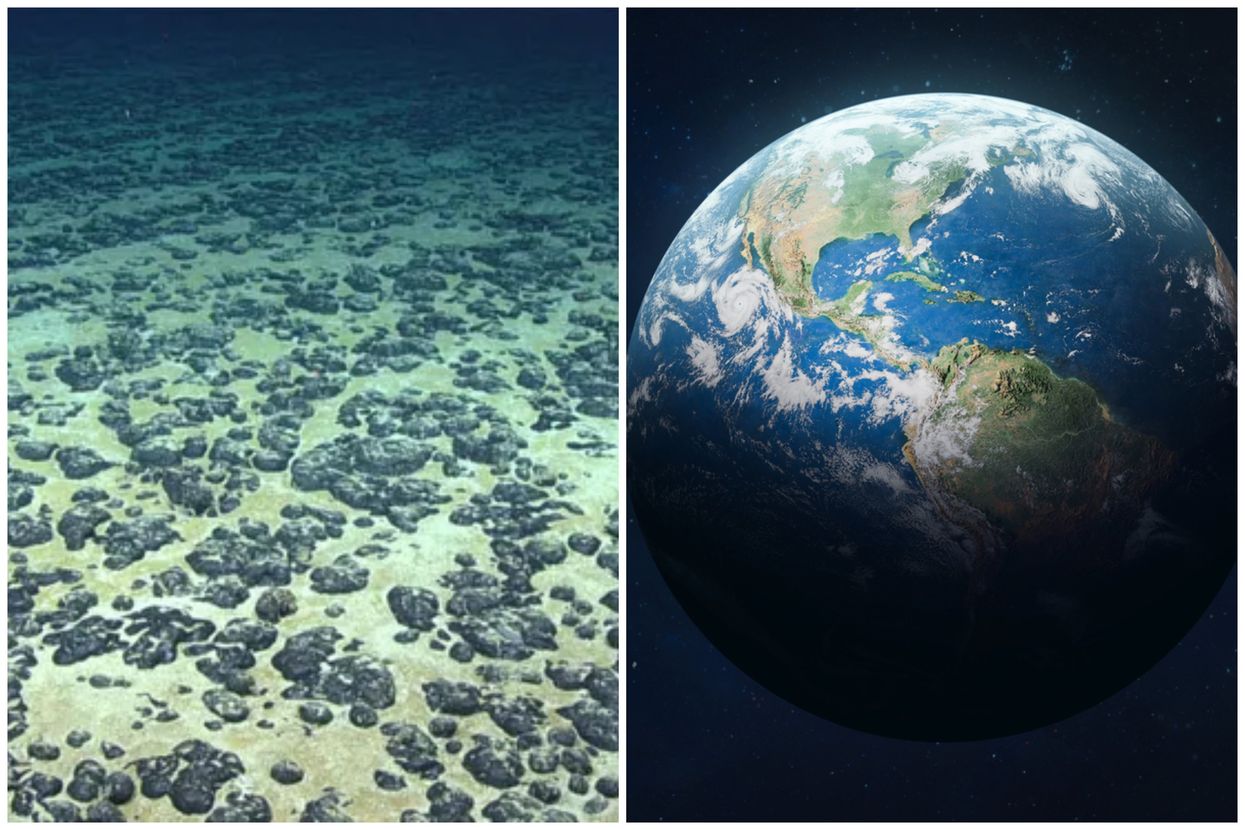Science & Tech
Harriet Brewis
Jul 23, 2024
Key to origins of life on Earth could be in 4.5 billion-year-old …
PA
Our understanding of the origins of life itself faces a potentially drastic overhaul following a startling discovery deep on the seafloor.
Marine researchers were surveying a mountain range in the depths of the Pacific Ocean when they noticed something strange.
Instruments deployed by the team kept registering a rise in oxygen levels and yet, the area they were analysing – more than 4,000 metres (13,000 feet) down – was in complete darkness, meaning oxygen production should have been impossible.
After all, we are taught that this essential building block of life comes from plants and phytoplankton, which harness sunlight to break down carbon dioxide and water and release O2 – a process known as photosynthesis.
So with no light, there should have been no oxygen.
Indeed, Professor Andrew Sweetman, of the Scottish Association for Marine Science, who led the expedition admitted: “When we first got this data, we thought the sensors were faulty because every study ever done in the deep sea has only seen oxygen being consumed rather than produced.”
He continued in a statement: “We would come home and recalibrate the sensors, but, over the course of 10 years, these strange oxygen readings kept showing up.”
It was only after different methods of oxygen detection offered up the same results that Sweetman and his colleagues knew they "were onto something ground-breaking and unthought-of.”
They soon realised that potato-sized metallic deposits strewn across the seafloor were releasing oxygen in complete darkness and without any help from living organisms.
The production of this deep-sea oxygen, which Sweetman and his team dubbed “dark oxygen,” represents the first time scientists have ever observed oxygen being generated without the involvement of organisms.
In so doing, it fundamentally challenges what we know about the creation of life on Earth, and our quest for life beyond our planet.

The results of Sweetman’s investigations were published on Monday (22 July) in the journal Nature Geoscience.
They suggest that the small metallic deposits, found in the Pacific's Clarion-Clipperton Zone (CCZ), produce oxygen via seawater electrolysis. This process involves the splitting of sea water into oxygen and hydrogen in the presence of an electric charge.
Researchers believe that this charge may come from the difference in electric potential that exists between metal ions within the nodules. This then leads to a redistribution of electrons, according to the study.
Polymetallic nodules like these are common on the so-called ocean's abyssal plains – flat regions of the seafloor between 3,000 and 6,000 metres (10,000 and 20,000 feet) below the ocean surface, as Live Science notes.
They predominantly consist of iron and manganese oxides, but they also contain metals including cobalt, nickel and lithium.
In addition, they feature rare earth elements, such as cerium, that are essential components of electronics and low-carbon technologies.
Sweetman and his fellow biochemists, originally set out to study the potential impact on the seafloor ecosystem of mining these nodules in the CCZ – an abyssal plain which spans some 4.5 million square kilometres (1.7 million square miles) between Hawaii and Mexico.
In order to carry out their assessment, the team measured changes in oxygen concentrations using special experimental chambers positioned at multiple locations.
Typically, the deeper you go in the ocean, the more oxygen levels drop. This is because less light is available, meaning there are fewer photosynthetic organisms and therefore lower oxygen production.
And yet, instead of the expected decrease in oxygen, the data showed steady emissions from the seabed.
This extraordinary discovery undercuts the long-held belief that Earth's oxygen is only naturally produced through photosynthesis (and, to a far lesser extent, oxidising ammonia).
As a result, scientists are having to rethink how life began on Earth some 3.7 billion years ago.

"For aerobic life to begin on the planet, there has to be oxygen and our understanding has been that Earth's oxygen supply began with photosynthetic organisms," Sweetman explained.
"But we now know that there is oxygen produced in the deep sea, where there is no light. I think we therefore need to revisit questions like: where could aerobic life have begun?"
In addition, his team’s findings raise new concerns about the mining of polymetallic nodules, given that these could represent a vital source of oxygen for deep-sea ecosystems.
"Through this discovery, we have generated many unanswered questions,” Sweetman concluded.
“And I think we have a lot to think about in terms of how we mine these modules, which are effectively batteries in a rock."
Sign up for our free Indy100 weekly newsletter
How to join the indy100's free WhatsApp channel
Have your say in our news democracy. Click the upvote icon at the top of the page to help raise this article through the indy100 rankings
Top 100
The Conversation (0)














